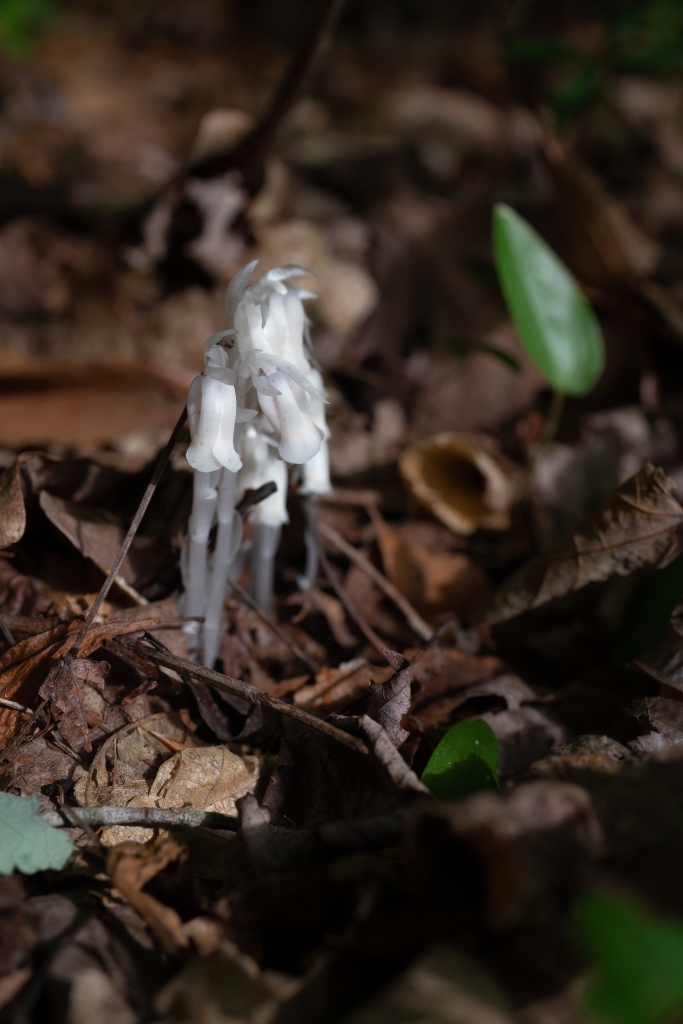An interesting plant that spends its life primarily underground and is spotted thanks to its white flower spikes. The plant is an herbaceous parasite that lacks proper chlorophyll as it does not require sunlight to produce its energy. It can be found across the US, and in some parts of Asia. It flowers late summer and Autumn.

It is a mycoheterotrophic plant, which means it is a parasite on fungi that traditionally are in a symbiotic relationship with other plants/trees. Plants and fungi interact with each other in complex ways. Some, like most orchids, depend on fungi for germination and adult life. The relationship is called a Mycorrhiza. It is believed that plants, like the ghost pipe, evolved to only take from the fungi it was in a mutualistic relationship with, thus becoming a parasite.

Effectively these plants are parasites on other trees/plants in a mutualistic relationship with the fungi. This form of parasitism is not uncommon, and a specific description can be found in Tom Volk’s Fungus of the Month.
There is another method, though, something that’s far more exciting! In the second half of the twentieth century, countries (US and USSR) were conducting nuclear tests. These tests released a plume of carbon isotopes (C-13), causing an increase in its prevalence in plant material alive around that time. Thus plant material decaying from before the tests and plants active during the tests have a different carbon signature. This difference has been exploited to distinguish between saprotrophs and mycoheterotrophs.



[…] hypopitys, or the pinesap, is a cousin of the more common ghost pipe. Both plants are parasitic depending on mycorrhizal fungi found in the forest floor. Unlike its […]
LikeLike